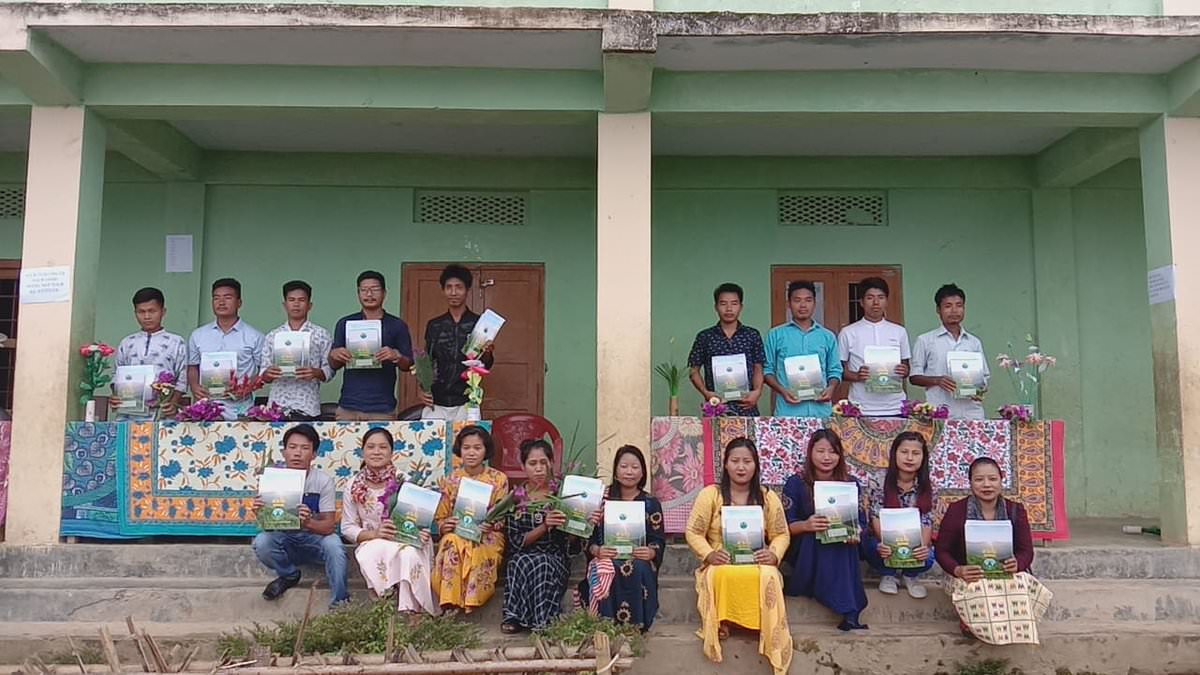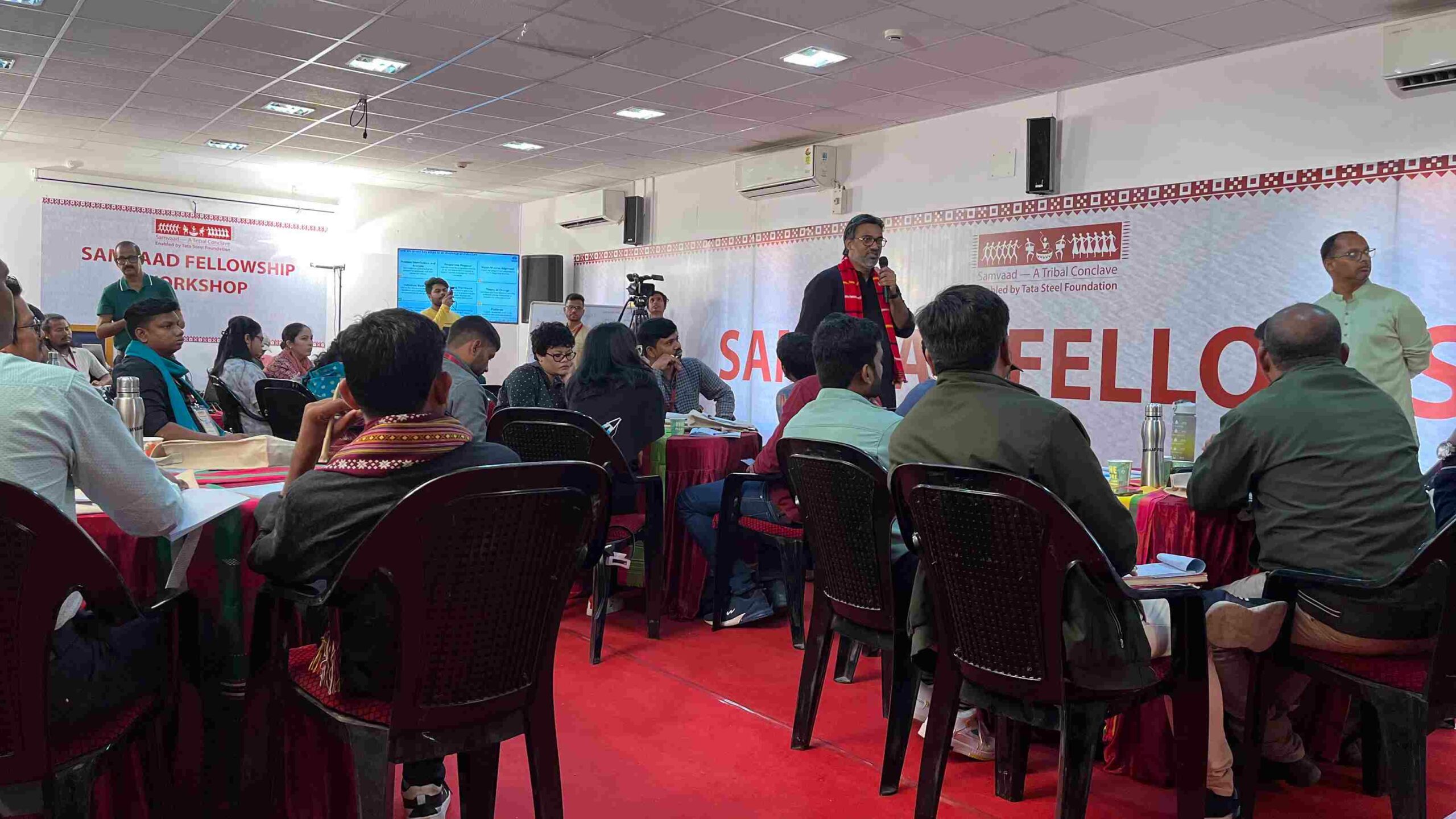This text has been revealed in partnership with Samvaad – Enabled by Tata Metal Basis
Up to now 50 years, India has misplaced over 250 languages, as reported by UNESCO. This loss not solely impacts languages but in addition varied fields like historical past, biology, and anthropology.
However, there’s excellent news. Recently, there’s been a rising effort to protect cultural identities all through India, and the Samvaad Fellowship programme stands as a major contributor to this motion.
Began in 2017 to empower the tribal communities, the fellowship encourages their youth to doc their historical past, tradition, ecology, traditions, artwork and extra.
“The aim of the fellowship is to get tribal communities to deep dive into their tradition and assist them form their concepts in collaboration with varied consultants. The thought behind documenting completely different cultures is to create a repository of knowledge and make it accessible to the remainder of the world. At Samvaad, being a tribal is a supply of satisfaction. The group solutions the hardest questions on their identification and tries to deal with them,” Sourav Roy, TSF CEO, advised The Higher India.
The fellowship is a part of Samvaad, one in all India’s greatest tribal conclaves within the nation, enabled by Tata Metal Basis (TSF). It takes place from 15 to 19 November yearly to commemorate the delivery anniversary of Birsa Munda, a tribal independence activist and chief from Jharkhand’s Munda tribe.
Samvaad stepped right into a decadal journey in 2023 and the current version’s theme was ‘Stroll with Me’. The theme recognised the journey of concepts, dialogues, people, and collectives inside and among the many tribes of India, aiming to deal with future challenges via shared knowledge, thought change, and self-learning. The five-day conclave spotlighted varied solution-driven dialogues and initiatives which have emerged from previous conclaves.
It was hosted at 5 areas — TSF Group Corridor (RD Bhatta), Jamshedpur Nature Path, Tribal Cultural Centre, Gopal Maidan, and Johar Haat. Gopal Maidan and Tribal Tradition Centre served as the primary exercise hubs whereas Johar Haat housed a cloud kitchen facility for making ready meals for house supply in collaboration with Zomato.
Through the years, the conclave has celebrated and united over 40,000 folks from over 200 tribes in India and 17 different nations. The Higher India spoke to previous fellows — Banwang Losu and Amabel Susngi — about their super motion in the direction of preserving their tradition.

Preserving lullabies and languages
For hundreds of years, folks the world over have adopted the nightly ritual of singing lullabies to infants for a peaceable sleep. Nearer house, we’ve got 1000’s of lullabies in several languages. Nonetheless, this custom has light over time.
Ask your self whether or not you bear in mind a lullaby out of your childhood!
When 28-year-old Amabel Susngi from Meghalaya noticed that the lullabies in her native language Khasi have been changing into a factor of the previous, she determined to doc them. As a part of the Samvaad Fellowship, she gathered varied lullabies and revealed them in a guide.
A PhD researcher and a singer, she travelled throughout Meghalaya for over a yr to gather these lullabies. She has documented 25 of them in her guide ‘Ha Yupiam Ka Bei’ (On Mom’s Lap), which was revealed in each Khasi and English this yr at Samvaad. It additionally comes with musical notations, and every bit has a QR code main the reader to its YouTube model.
“Whereas researching the people music of the Pnar group, I realised that not many individuals remembered lullabies. That was a shock. Lullabies have been handed down via generations. Whether or not conventional or one thing made up by mother and father, it has been an vital material of 1’s tradition,” Amabel advised The Higher India.
The street to publishing had its challenges, she provides, the most important being analysis.
“Mother and father don’t sing anymore, and aged folks don’t fairly bear in mind all of the lullabies. Some knew just one line or two, and a few remembered solely the tune or lyrics. Scheduling conferences was not an choice, so I needed to work round their availability. Samvaad solved the essential funding drawback, and it helped me join with different fellows across the nation,” she added.
In the meantime, Banwang Losu from Arunachal Pradesh developed a script to protect Wancho — a Tibetan-Burman language spoken within the Longding area of the state and a few elements of Myanmar, Nagaland, and Assam.
Banwang first felt the necessity to have a Wancho script when he was requested to gather information about his group as a part of his socio-economic examine in faculty. He was unable to seek out the suitable English phrases to convey refined tones. He tried to perform a little research and even began pursuing a grasp’s in linguistics at Deccan School Submit Commencement and Analysis Institute in Pune.
Whereas growing the script, he took inspiration from nature and Wancho cultural symbols, practices, and gestures. He developed a script with 44 letters (15 vowels and 29 consonants), every letter representing a definite tone.
Banwang was the primary fellow at Samvaad. “Whereas engaged on the Wancho script, I heard about Samvaad and got here right here in 2017 with none proposal. Nonetheless, the jury was delighted to see my work. Being a fellow right here was eye-opening as it’s the solely programme for tribals at this scale. Utilizing the grant, I made textbooks on the Wancho language,” he advised The Higher India.
Banwang taught the language to 2,000 folks, and 20 of them at the moment are academics. Due to his work, over 6,000 college students can learn and write in Wancho. He additionally bought the script accredited for on-line use by the US-based Unicode Consortium.
“Each language is equally vital regardless of how large or small. We have now to have a look at different minority languages with the identical standing and construct scripts to protect them. Lack of language is a lack of our personal,” he added.

Reviving traditions and unveiling knowledge
Improvement, which was accountable for the decline in tribal populations, is now getting used to protect tradition. Amabel and Banwang are utilizing digital media to doc their language and lullabies. A easy act of writing and recording is doing wonders for the group.
Of the 35 purposes, 10 obtained the fellowship after rigorous rounds of interviews and pitches this yr. And in between the method, all of the candidates went via ability upgradation periods.
“Most candidates have nice concepts however should not savvy sufficient to write down a proposal or give a presentation. Once we consider range, we frequently overlook concerning the tribals. We expect they’re primitive and stay in jungles. However if you learn the proposals, you be taught their numerous knowledge, tradition and historical past. By way of this fellowship, we are attempting to protect that,” mentioned Oinam Doren, a jury member this yr.
A few of the Samvaad fellows 2023 embrace — Saka Mashangva, a people artist who needs to doc Tingteila, a conventional musical instrument of the Tangkhul tribe of Manipur which is sort of extinct; Santosh Pawar, a social activist who needs to protect and promote the folklore of the Bhil tribe; Madhavi Meravi, who needs to doc the people tales of Gond tribal communities as a part of youngsters’s literature; Pansy Jami, who needs to doc the advantages of fermented meals from the Lotha Naga tribe of Nagaland.
The candidates who get rejected are inspired to use once more, shared Oinam. The jury members and Samvaad crew proceed to offer assist by staying in contact to assist members improve their concepts or pitches for a stronger comeback.
(Edited by Pranita Bhat; All pictures courtesy: Samvaad by Tata Metal Basis)